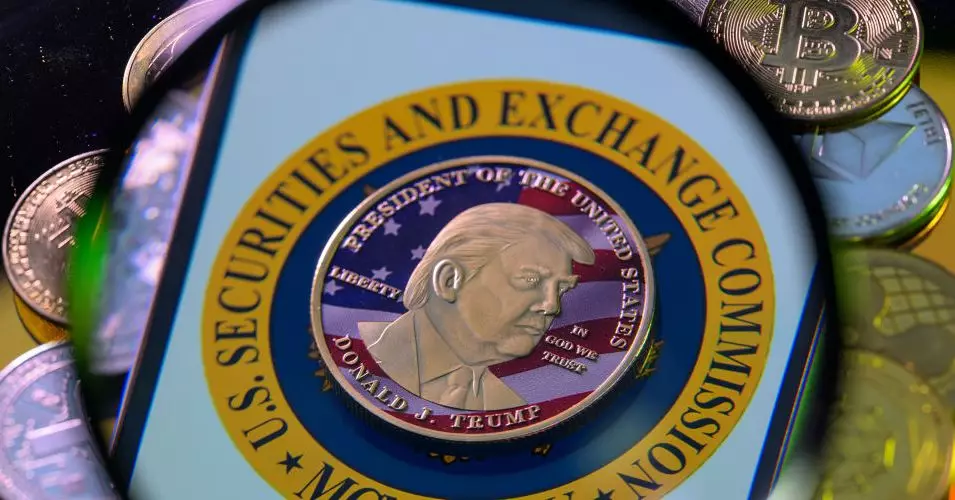In an unexpected twist in the cryptocurrency landscape, the team behind the Trump-branded memecoin ignited a trading frenzy this past Wednesday. They announced a dazzling invitation for dedicated investors: a gala dinner with none other than Donald Trump himself. This initiative aimed specifically at the top 220 holders of the $TRUMP token elevated the coin’s status from mere speculation to an exclusive community engagement tied to high-profile politics. The organizers tout this dinner as “the most exclusive invitation in the world,” promising attendees a firsthand account from Trump on his views regarding the future of cryptocurrency.
This audacious pitch succeeded where many have failed, igniting not just interest but palpable excitement throughout the crypto investor community. Within an hour of the announcement, the TRUMP coin surged nearly 60% in value, underscoring the volatile and speculative nature that characterizes this trading realm. Investors rushed to stake their claim in the coin, motivated either by the desire for a coveted dinner invitation or the hope of profiting from this frenetic surge. This atmosphere vividly demonstrates how speculation can drive market behavior, with investors acting more like fans than traditional investors.
The Underpinnings of Profit: A Crypto Reality Check
However, a deeper analysis of the TRUMP coin reveals a murkier reality beneath the surface of this soaring valuation. Two affiliated organizations—CIC Digital LLC and Fight Fight Fight LLC—control a staggering 80% of the total coin supply. While speculation and investor frenzy might drive the price momentarily, these entities profit primarily from trading volume rather than price appreciation. The operational structure cleverly devised around the TRUMP coin reflects an understanding of market mechanics that most investors may overlook.
Upon initially launching the token, these organizations allocated 10% of the total coin to a liquidity pool, with the intention of ensuring that the asset could be traded without hindrance. This liquidity pool is essential in providing market stability—a mechanism through which the organizations can maintain fee income ranging from 0.1% to 10% based on trade demand. The analogy to “surge pricing” in ride-share apps captures the essence of how their profit structure works: they gain from inflating trading volume.
This profit model contrasts sharply with traditional investing, where the focus is generally on long-term price appreciation. Instead, in the world of memecoins, where sentiment swings can trigger erratic trading behavior, momentum becomes king. As Nathan van der Heyden of Aragon points out, for entities like CIC Digital and Fight Fight Fight, the following fluctuations—rather than their actual price—are the true game-changers.
The Ethics of Control: Market Manipulation and Reputation
The situation raises significant ethical questions surrounding the practice of control and market-making in cryptocurrencies. Transparency often takes a back seat to profit in such environments, allowing entities to operate while maintaining an air of legitimacy. Because the Trump-affiliated organizations hold the majority of the coin but are simultaneously restricted from selling it for three years, they strategically navigate around the potential backlash associated with devaluating their own coin. The optics of such actions could be disastrous; however, accruing trading fees through market-making feels like a far less risky approach, cloaked in a layer of operational complexity that obscures direct accountability.
On paper, they could stand to benefit from appreciation in price due to their large holdings, but their retention of such assets is also a double-edged sword. If they were to sell en masse, the market would likely plummet—a scenario that could lead to reputational ruin. Thus, the genius of their strategy lies in the balance between holding assets for potential gains while simultaneously leveraging market-making fees.
This intricate play demonstrates the various layers present in the crypto trading game, which is all too often seen as a straightforward investment vehicle. Investors need to tread carefully in such tumultuous waters, as the structural realities may not align with the average investor’s expectations of profitability based solely on price hikes. Holding coins in the hope of future value appreciation comes with its own set of risks, especially in such a volatile space influenced by social media buzz and speculative interest.

